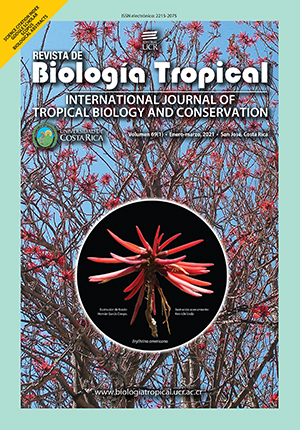Abstract
Introduction: Morphological differences are the product of phenotypic plasticity, genetic adaptation or genetic drift, but very old populations are not always required for local adaptation if selective factors are present. Objective: This paper examines the variation in fish body shape in low-altitude coastal rivers to determine if there are common patterns of morphological variation among species and along the course of the watersheds. Methods: From July 2016 to June 2017, a series of ichthyologic samples were collected to analyze the body shape of three species along the entire watercourse of two coastal rivers in Northwestern Ecuador, using geometric morphometrics and multivariate analysis techniques. Results: A parallel change in body shape was found from the lower zone to the upper zone in the three species, characterized by a decrease in body depth. We also found varying levels of allometric variation in the body shape of the three species. Conclusions: Different fish species in these watersheds exhibit parallel changes in body shape along the watercourse that are influenced by ecological and evolutionary processes even though these rivers vary little in altitude, highlighting the importance of these basins as reservoirs of the evolutionary legacy of the fauna and flora in the Neotropics.
##plugins.facebook.comentarios##

This work is licensed under a Creative Commons Attribution 4.0 International License.
Copyright (c) 2021 Pedro Jiménez-Prado, Windsor Aguirre







